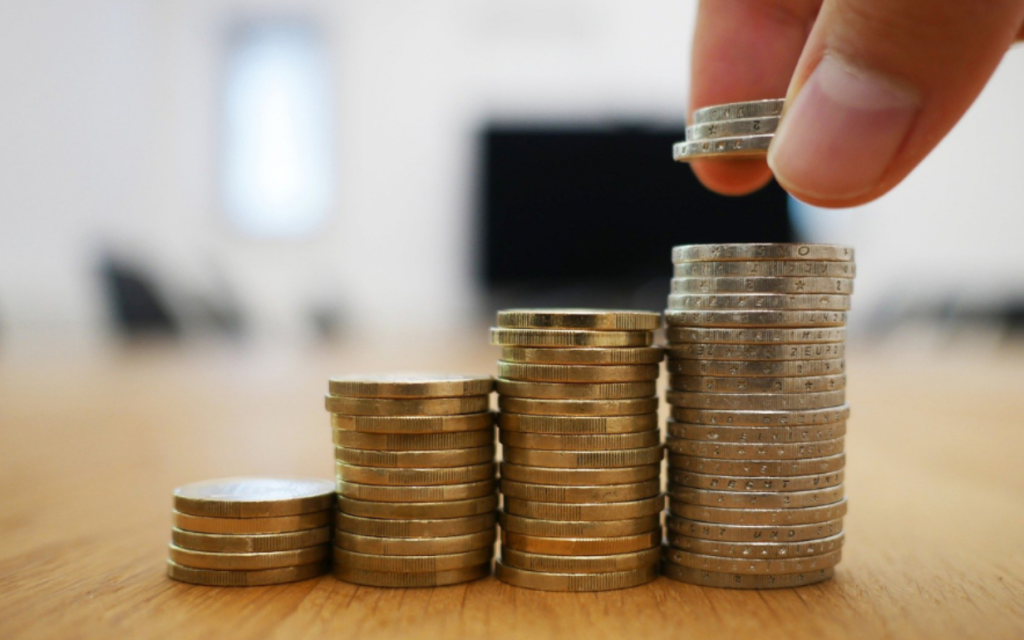Passive income is not money that comes on its own. It is the result of a thoughtful strategy based on assets, investments, and automated systems. To make it stable, you need to carefully choose tools and understand what risks may arise.
Strategies for creating regular income can be divided into three main categories:

- investments in financial assets;
- monetization of tangible assets;
- digital business models.
It is important to consider initial investments, payback periods, and the stability of the source. In the article, we will examine these issues in detail and provide examples of passive income opportunities that you may consider.
Investing to Generate Passive Income
Investment strategies include buying stocks, bonds, funds (ETFs). Also, investments in real estate and cryptocurrency. A reliable source of periodic income is dividend stocks of large companies. For example, companies like Coca-Cola and Gazprom, which provide stable earnings.
Example calculation: investing 1,000,000 rubles in dividend stocks with a yield of 7% will provide annual payments of 70,000 rubles. If you reinvest the dividends received, the revenue will increase due to compound interest.
Renting out Real Estate for Profit
Profit from renting out real estate is the most stable type of passive income. The average return on long-term rental of apartments is 5-6% per annum. Daily rent can bring up to 15-20%, requiring active management.
When investing in real estate, it is important to consider location, liquidity, and possible expenses. Renting an apartment in the center of Moscow can bring in 60,000 rubles per month with an investment of 12,000,000 rubles. It is important to consider taxes, depreciation, and possible vacancies.
Turning Content into a Source of Passive Income
Digital assets and online businesses are a promising way to earn income. Selling courses, digital products, mobile applications, monetizing content on YouTube and websites allow you to earn without constant involvement.
Creating an online course requires time and effort. In the future, it can bring stable income. For example, if a course on internet marketing costs 10,000 rubles and is purchased 100 times a year, the revenue will be 1,000,000 rubles.
Best Passive Income Options in 2025
In 2025, investors are choosing strategies that combine reliability, minimal risks, and high profitability. Let’s consider the most effective ways of investing and monetizing assets that allow you to profit with minimal time and effort.
Investing in Stocks, Bonds, and Funds
The stock market remains one of the most reliable ways to generate passive income. Investing in S&P 500 index funds historically yields an average of 8-10% per annum. ETFs allow portfolio diversification and risk reduction.
Bonds are a less risky but stable source of income. Russian government bonds yield around 9% per annum, higher than average bank deposits.
Renting out Commercial Real Estate
Commercial real estate yields higher returns than residential. The average payback period for office spaces and retail premises is 8-12 years, while for residential properties, this period extends to 15-20 years.
Example calculation: investing 20,000,000 rubles in a retail space with a rental rate of 250,000 rubles per month will yield an annual return of 15%.
Dividend Income
Stocks with high dividends provide stable profits. Russian companies such as Lukoil and Sberbank offer dividend yields ranging from 6% to 12% depending on market conditions.
Digital Assets and Automated Businesses
Monetizing digital products – selling photos, videos, music on platforms like Shutterstock, Envato.
Blogs and YouTube channels can generate significant income through advertising and affiliate programs. For example, a channel with 100,000 subscribers and good engagement can earn 100,000 rubles per month.
Passive Income: Examples from a List of Proven Ideas
Independent earnings allow you to profit without constant involvement. In 2025, investments, digital products, and automated businesses are popular. Let’s consider a few more options that you might like:
- Long-term investments in stocks. Buying shares of companies with high dividend payouts, reinvesting profits, and growing the portfolio. The development of the stock market and the emergence of convenient platforms for investors make this tool accessible and profitable.
- Cryptocurrency staking. Participation in the Proof-of-Stake mechanism, allowing you to earn income for holding cryptocurrency. The average return is 5-10% per annum, and choosing reliable platforms (Binance, Kraken) minimizes risks.
- Content monetization. Earning from advertising, affiliate programs, sponsored content on YouTube, blogs, podcasts. The more people are interested in the content, the more you can earn.
- Profitable websites. Buying already established websites with good traffic, monetizing through ads, services, or affiliate programs. Profitability varies depending on the topic and traffic.
- Franchise business models. Acquiring a franchise from a well-known brand with an established sales system and minimal risks. Earnings are achieved through working on a ready-made business model.
- Automated online sales. Dropshipping, marketplaces, online stores with automated logistics and minimal manual management. Investments in advertising and SEO promotion accelerate sales growth.
- Renting out specialized equipment. Construction, photo, video, or industrial equipment. A high-demand market with high profitability with minimal owner involvement.
- Investing in REITs. Buying shares of real estate investment funds. High dividend payouts make REITs an excellent alternative to direct real estate investments.
- Developing mobile applications. Developing software with monetization options through subscriptions, in-app purchases, and advertising. High return potential with quality development and marketing.
- Authoring books and courses. Creating educational materials, selling on platforms like Udemy, Coursera, LitRes. Content demanded by the audience can bring stable income.
The choice of a suitable option depends on the initial capital, level of involvement, and long-term goals. The more time and resources invested at the start, the higher the likelihood of stable earnings in the future. The main thing is to choose a strategy, minimize risks, and regularly analyze the market.

Conclusion
Creating passive income requires investing time and money. Over time, these investments begin to bring stable profits without constant involvement. The most reliable options remain investments, real estate rental, and digital assets. It is important to consider risks, diversify income sources, and manage finances wisely. Building additional income is not an instant result but a thoughtful strategy.
The main advice is to start with accessible tools, reinvest profits, and scale successful ideas. Even small investments today can provide stable financial independence in the future.








 Investing in bonds is one of the most reliable ways to generate passive income. Bonds can be government bonds or corporate bonds. Government bonds carry little risk, as they are issued by the government and the yield fluctuates between 10 and 12 percent annually.
Investing in bonds is one of the most reliable ways to generate passive income. Bonds can be government bonds or corporate bonds. Government bonds carry little risk, as they are issued by the government and the yield fluctuates between 10 and 12 percent annually. Given the economic instability, passive income has become one of the best strategies for achieving financial freedom in Russia. Whether you invest in bonds, real estate, stocks, or more modern instruments such as crowdfunding, it is important to approach the topic thoughtfully and carefully weigh all the risks and benefits. This is not just a way to make money, but a path to freedom and stability. In 2024-2025, you can use various sources of income to create a solid financial foundation for the future.
Given the economic instability, passive income has become one of the best strategies for achieving financial freedom in Russia. Whether you invest in bonds, real estate, stocks, or more modern instruments such as crowdfunding, it is important to approach the topic thoughtfully and carefully weigh all the risks and benefits. This is not just a way to make money, but a path to freedom and stability. In 2024-2025, you can use various sources of income to create a solid financial foundation for the future.